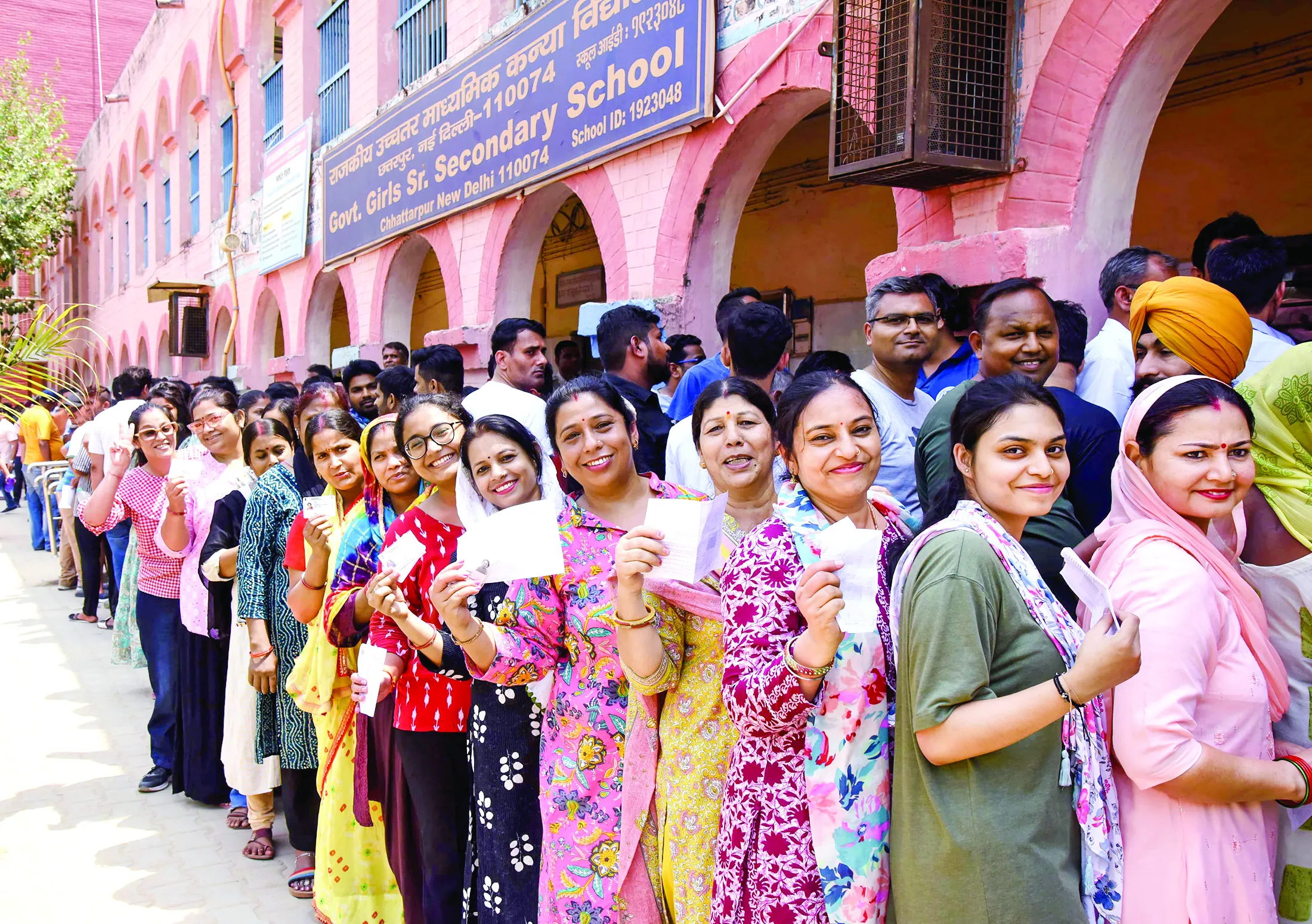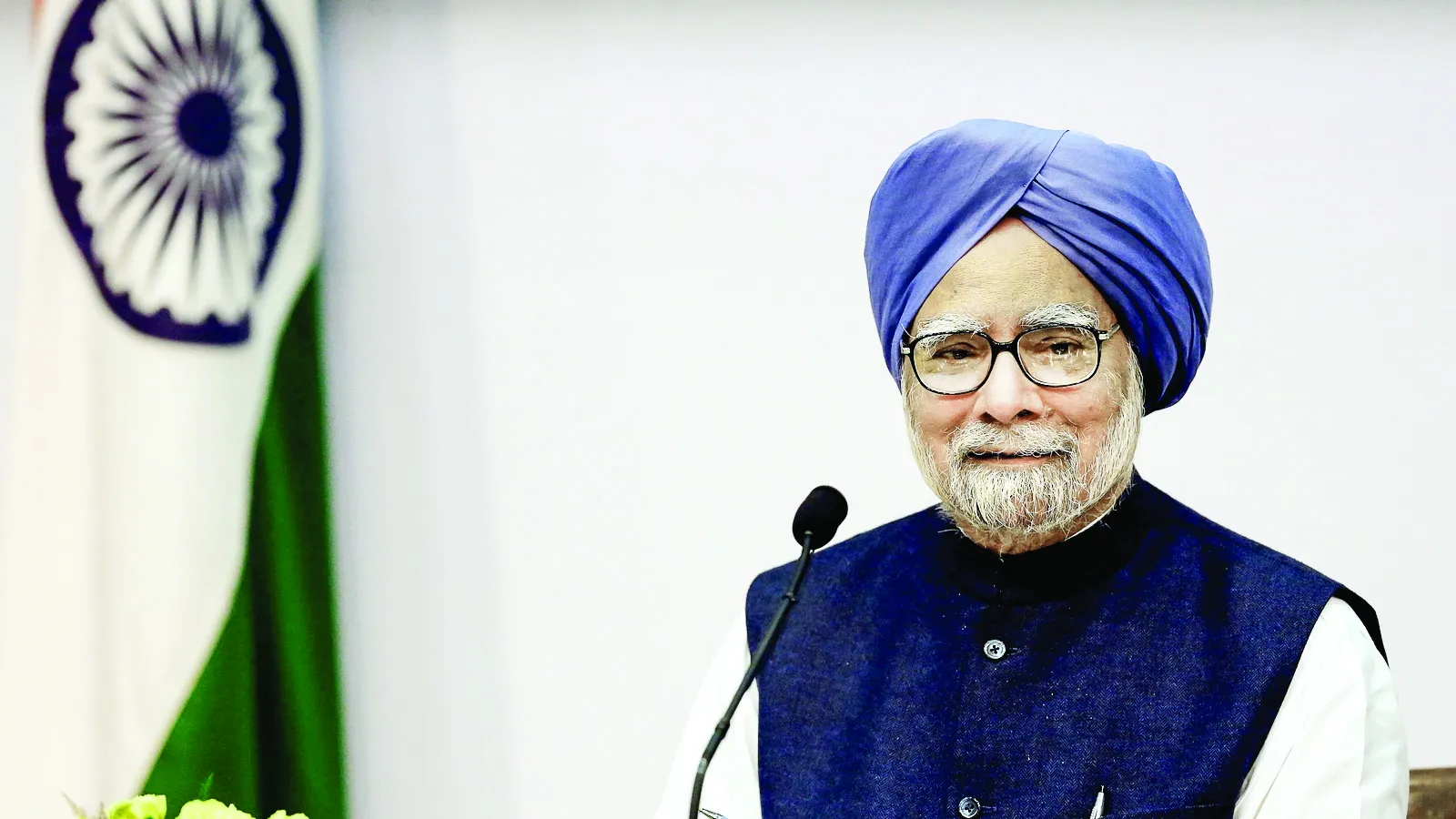Indian farmers are a diversified lot, a lot more than the immense diversity of our vast country. There are rich farmers, with varied interests, and large landholdings (more than 50 acres), medium level farmers with 10-15 acres’ land holdings, small farmers between 5-10 acres of land, and marginal farmers between 1-5 acres of holdings— suitable for cultivation. These farmer households, own animals, such as sheep, goats, and buffaloes; some own poultry farms; still others run small dairy units. Their family may be running a trading or commission agency business; surely most medium to large farmers will own tractor/s, and other farm machinery and equipment; others will rent the agriculture machinery. Of course, every farmer will cultivate his land during Kharif and Rabi seasons. So, income to farmers can come from agriculture (farm income 45%), or from other sources, (non-Farm income 55%).
THE BACKDROP
A large number of Farmers in India are principally involved in the cultivation of paddy, cotton, sugarcane, fruits and vegetables, pulses, etc. during Kharif and with wheat, potatoes, onions, fruits and vegetables, oilseeds, etc. during Rabi seasons. The cash crops are sold in Agricultural Markets/Mandis, and to Government Agencies at Minimum Reserve Prices for such crops. Middlemen buy crop produce, store it in cold storages, or sell to buyers, and are the link between wholesalers, and retailers in urban, semi-urban, and rural markets. The prices for agricultural produce, are fixed based on the quality of the crop and the quantity available for sale. Commission agents (Aartiyas’), barter inputs with farmers against crop production, to set off debts and interest. Banks and Agri-Input Companies may also do this on occasions. Dependant, as the farmers are, heavily on monsoons in India, the uncertainty that surrounds their crop management, is a continuing worry. Indebtedness is an unbreakable shackle, that binds the farmers, in a strangulated vice, from which to break free, a next to impossible dream. Agri-inputs such as seeds, fertilisers, pesticides, are expensive, agricultural labour hard to come by, and costly to engage, irrigation facilities, a once in a while comfort. How does one foresee drought, or floods, or crop damages, or various other threats that loom around our farmer’s fields? The net impact is on farmers’ income. He receives after all deductions, paltry rewards for his herculean efforts, to feed 138 mouths in India. Yet, relentlessly he carries on toiling and sweating, year on year. Some respite, that vegetables, milk, ghee, and butter etc., can be managed in house, but this too, not by every farmer household. Costs of Land development, marriages, repairs, health issues, education, and day-to-day family expenses, pose a daunting challenge to farmers to manage their budgets. And Litigation can really finish whatever savings remain. This then is a brief backdrop and context, that engulfs farmers today, barring some population, at the upper end of the income pyramid. The ideal to ‘Double Farmer’s Income in Five years’ thus becomes, not only relevant but an essential policy focus and thrust, if India is to maintain its economic growth momentum in a balanced way, envisaged by the Government. The fountainhead lies in India’s 650000 villages!
THE ISSUES
Indian Agriculture is an integrated system, where animal rearing and crop management co-exist. The three pillars that address the vision of doubling farmers’ income are Crop Farming: Agro-Forestry and Animal Husbandry.These may be supported through non-farm activities, agribusiness, and other sources of income not directly related to agriculture. 57% of India’s population depends on agriculture for their livelihood, 14% GDP share, and employs 64% of the rural workforce. Growing infrastructural projects, reverse migration, mushrooming supply chain spoke and retail hubs in small towns, availability of internet connectivity and digital penetration, the emergence of powerful regional brands, financial inclusion, e-education, village-level health care, redefined distribution models, etc. have combined to make an environment, where products and services, relevant to the geography can evolve, develop and thrive, to become profitable business propositions for farmers and rural folk. Such a macro environment for economic prosperity has perhaps, emerged in India for the first time.
Fragmented land holdings, absence of land reforms, poor quality of Agri-inputs, lack of mechanization, obsolete crop management practices, sparse irrigation facilities (5.6 lakh hectares is under micro-irrigation projects and Rs. 12000 odd crores allotted), low water table, uncertain monsoons, etc. lead to very low crop yields and poor quality of crop produce as compared to global standards. Post-harvest losses are huge. The adoption and availability of technology are weak and not cost-effective. There is host of other factors as well, and the result is: low farmer income.
Where have all the farmers gone? Where are the farmers of tomorrow who will be called our ‘Sons of the Soil’? Gone to towns everyone— is the writing on the wall! Gone to explore their own destiny and find their identity? Even the girls and women are following suit. A nationwide farm survey by CSIS reported that 62% of the youth in rural areas, did not want to take up farming since it was unprofitable and, that, there were better options that would give higher earnings and improved quality of life. 69% of farmers own less than 2 Ha of arable land. Even with best practices, given the vagaries of nature and monsoons, these farmers cannot subsist on crop income alone. Statistics state that small farmers earn Rs.6240.00 per month from agriculture. This is a non-sustainable business model, one of diminishing returns, with input costs going up and market prices eroded by middlemen. No wonder non-farm income is increasing, being 55% of total rural income, at this time. Farmers in the hill States are even worse off. Demographic change is evident, but is there any dividend at the bottom of the Pyramid?
It is an understanding of the above situation, that has made our PM raise the policy objective of “ Doubling farmers income, and supported by New Farm Laws, now repealed due to political constraints.
SNAPSHOT OF FARMER INCOME
Various Research reports indicate that the majority of farm households (64%) have cultivation as their principal income source. A large number (22%) have wage/salaried employment as the principal income source. About 4.7% and 3.7% have nonfarm enterprise and livestock as their principal income source. Remittances also form a principal income source for a substantial proportion (3.3%) of farm households. The total income is highest for households having nonfarm enterprises as their principal income source. These households earn about INR 1,04,593 in a year. This is followed by households that have other agricultural activities as their principal income source. They earn about 92% of the incomes earned by households with nonfarm enterprises as a principal income source. Households with wage and salaried employment as the principal income source also earn about 88% of incomes earned by households with nonagricultural enterprises as the principal income source. Cultivation and livestock households earn substantially lesser and their incomes are 72% and 73% of the annual income of nonfarm households respectively. Pension, other, and remittance households earn very less incomes and their incomes come to 48%, 41% and 15% of nonfarm households respectively. In terms of the components of income, the principal income source contributes to the highest income shares of a household. Agricultural households earn 68% of their incomes through cultivation and wages and livestock incomes contribute to 15% and 12% of the total incomes. Agricultural households with cultivation as a principal income source earn about Rs. 50,874 in a year. Other agricultural activity households also earn similar amounts but all the other households earn much lesser around 16-41% of this income from cultivation. Livestock households earn 65% of their incomes from livestock. They earn 19% and 15% from cultivation and wages. They earn about Rs. 49,465 from livestock in a year. The other households earn much lesser which accounts to roughly 9-20% of this amount. The nonfarm enterprise households earn 69% of their total income from nonfarm business. They earn 14% and 11% from cultivation and wages respectively. These households roughly earn Rs. 72,550 in a year from nonfarm businesses. The other households earn much lesser which accounts to roughly 1-9% of this amount. The wage/salaried employment households earn about 78% of their incomes from wages and 12% and 9% from cultivation and livestock. They roughly earn Rs. 72,089 in a year from their principal income sources. The other households earn about 3-43% of this amount in a year. All the other households earn majority of their incomes from cultivation (29-53%) and wages (16-44%). From these observations it seems that all households are able to diversify significantly in cultivation, livestock and wages. But nonfarm businesses are not something that is an income source for many. This is unlike wage employment. Though the wage employment households earn significant amount in wages, the other households also earn a reasonable percentage of this amount from it. One of the reasons for this disparity could be because of entry barriers posed by capital and other requirements in nonfarm businesses. (Source: ERI reports.)
The Farm and Non-Farm picture is changing. Non- Farm opportunities, have increased, and more are on the anvil. Agribusiness, cold storage, packaging of food, food processing, trading and servicing, etc. have spread across many sectors that use Farm products and are linked to Industry, Retail and Non-Farm Consumers. In the upper and medium rural farm households, non-farm incomes are increasing, while at the lower end, cultivation remains the principal source of income. At the upper end of progressive and rich farmers, opportunities are many in addition to Farm Income.
The Villages of India are the fulcrum of change. Selecting them on a measured criterion, they can be identified, on a state-wise basis, for conversion to ‘Smart infrastructure’. Emerging technologies may assist in this initiative.
THE WAY FORWARD
Ever heard of ‘Seamless and Connected Agriculture’? Digital and Precision farming? Track & Trace Tools? Biological controls for crop issues? Vertical Farming? Aeroponics and Aquaponics? Globally the changing crop management technologies are transforming through R&D efforts in Europe, US, China, and Latin America. Solar and renewable energy solutions are making life much easier for growers. The research Institutions in India that cater to agriculture, NABARD, ICAR, IARI, and Agriculture Universities have their task cut out. They must contribute to making agriculture profitable for growers. Of course, droughts and floods need to be managed in the best way possible – through an integrated approach, that seamlessly links the Agri Value Chain Ecosystem.
Surely, the big, medium, and small growers have to be looked at differentially, much like large, medium, and small-scale industrial enterprises. And all the stakeholders must play a role and be accountable for increasing yields, reducing costs, and optimising income. The rural women need empowerment, NGOs and SHGs need to be integrated into the policy framework. Banks, and educational platforms need to pitch in. Increasing incomes will result in more transactions for goods and services. Employment will rise. Quality of life will get a big boost. The Landscape will undergo a metamorphosis!
MAPPING, SATELLITE COMMUNICATIONS
India has relevant satellites in space that can map weather, floods, earthquakes, storms, and many other natural factors, such as soil erosion. In the future, information will be beamed to service providers, and thereon to farmers in real-time, which will help the farmers take preventive and corrective actions quickly, thereby preventing damage, protecting crops, and working with alternative solutions. The smartphone, now cheap, full of applications, connected by 4G, will be the vehicle in the hands of the farmers – a powerful tool that will enable quick and ready flow of information in real-time, when required, and at a small cost.
THE CLOUD
Information and data from villages will be stored in cloud, and analytics will keep standardized solutions saved and ready. Thus, recommendations regarding soil, crops, nutrients, chemicals, and other farm related information, will be available to farmers, regionally relevant and crop specific. The cloud will become the hub of knowledge management.
SENSORS
Leaf sensors, one in one acre of land, will give out information about plants, needing water and quantity required, and when! Sensors in the ears of animals will give data about animal sleeping, lying down, or eating. And many other applications, such as emergence of pests, etc., as the technology gets adopted and matures.
IRRIGATION
Irrigation projects will be connected. The systems will deliver water and fertilizers to the farm when required, (Fertigation), consume about 10% of what the farmers use today as water resources, give information on water quality, hardness, and TDS. Solar energy will be the enabler for pumps, filters, and drainage. Drip Irrigation will take on a new avatar. Water Harvesting for agriculture will be the way forward.
SEEDS
GM and hybrid seeds with in-planted protection genomes will protect the plants from pests and diseases. Seed treatment will be crop-specific and protect the crop through its life span. Data from the use of Hybrid and GM seeds will increasingly be available to be analyzed from angles of human and plant safety, and corrections made at every step, by scientists, in collaboration with Universities and Farm Institutions. Indeed, Seeds, have the potential to usher in a renewed green revolution in India.
CROP PROTECTION
New chemistries, use of biologicals, and organic products will make crop protection targeted and pest, weed, disease-specific and selective. The use of chemicals will decline. Integrated pest and crop management will become a reality, through the use of new mixtures, formulations, and safer applications, that are cost-effective. Spray equipment will carry flexible technology and information for farmers. Soil testing, water testing and pest threshold levels, would be mapped in real time on farms, through service providers.
FARM EQUIPMENT, ROBOTICS, MACHINE INTELLIGENCE
Driverless tractors, Harvesters, Seed transplanting machines, guided by the Satellite, will take over from landless labor, releasing them for other gainful employments. Equipment suitable for small, medium and large farmers will be available on rent, lease, or sale from high-class equipment providers, who would help maintain the machines and systems. Already some companies are active in this space.
VERTICAL FARMS: AEROPONICS AND HYDROPONICS
Singapore, US, Japan, Vietnam, Korea, etc. are already pioneering vertical farms, as the future of agriculture, to save land, and provide fruits and vegetables to domestic populations on a sustainable basis. Small Hydroponic pilot Units India’s Maharashtra, TN, Punjab, HP etc. have started such ventures. The technology is available. Vertical Farm Association has been established in India. Entrepreneurship has to step in with the government support.
POST-HARVEST SOLUTIONS
Computerized silos, catering to village clusters, will provide information on weight, volume and other parameters, of grains. They will automatically be connected to Cloud. Fumigation and stored grain pests and fungi will be controlled through modern systems. Each silo can cater to a specific number of village clusters in the area on a lease basis, and be connected to cold chains, storage warehouses and transport linkages – from farm to retail! Vacuum packaging will keep grains and cereals pest free, healthy, original and fresh, through use of inerts such as Nitrogen. Pilot units are set up in Dharwad University in Karnataka. Connected E-markets, such as E-NAM, through digitalized Mandis, will help replicate policies regarding MSP, etc. that were proposed in the now repealed Farm Laws.
PRECISION AND DIGITAL FARMING
The above technologies will contribute to precision farming. Track and Trace Digital Farming tools will assist in tracking the history of the crop, such as grapes, fruits and vegetables, from seed to harvest, and provide real-time information on Residues, diseases etc. The technology is already implemented by Companies in India, in the Nasik Grape belt. More applications are on the anvil by Start-Ups.
DIGITAL E-LEARNING, FARMER EDUCATION
Already many NGOs and SHG offer services to farmers regarding crops, commodities, products, and prices. These initiatives will reach multiplier levels soon, thus making information, knowledge, solutions, actions – available to the farmer at the clicks of smartphones. Multimedia, Videos, and global connections will be available at a low cost. Extension services will greatly benefit by adopting digital approaches to farmer issues, on the Farm, for animals, and for poultry and fisheries. Digitalization is already making these initiatives possible.
It can be said that the face of Indian Agriculture can and will change. What is needed is for the stakeholders both public and private to Focus on this sector, with the objective of making it profitable, for our emerging young demographics. The need of the hour is, Marketing of Indian Agriculture, as a dynamic future vehicle to sustain business and reap profits. If politicians can go beyond politics, and if the industry can engage with the farmers, using technologies outlined above, Indian Agriculture could climb to dizzy heights, and can provide food security to over 1.5 billion people and more!
The vehicles of this change, are the FPOs and KVKs. Given proper training and empowerment, through professional financial monitoring and farmer interface, these institutions can be at the forefront of ushering in the “smart era” into Indian village ethos and practices. Already it is believed, substantial progress has been made to experiment with various business models, that may suit FPOs and KVKs and farmer groups, in various States. Agriculture startups may be the supporting commercial e platforms that encourage the use of smart applications at village levels, and ensure last-mile connectivity and delivery of solutions.
DO BUSINESS AROUND SHARED DESTINY
The direction to go, inevitably, is to empathise with the poor, do business around shared destiny, then think and innovate, discover and experiment, set time frames and budgets, and commit to improving the villager’s life. Organizations should envision linking the personal growth of their people with the growth of the enterprise and that of its inclusive society. The government is doing what is required; industry and institutions must support its efforts and embrace rural India in its villages; walk down its dusty tracks; debut regional & local brands in the marketplace; support skill-building projects; make village level operations participative and inclusive of the rural population and aligned with agricultural tapestry in the country.
Mahatma Gandhi once said, “True India lies in its 7 lakh villages; If the villages perish India will perish too.”
Inclusive Capacity Building, through evolving smart villages, it is hoped, will embrace the villages in India, and make them participate in winning partnerships that bring a smile to the faces of its 800 million people. Then the ‘India Shining’ story will become real and live!
The writer is a Senior Professor, Rural Marketing and Management, and the Managing Director at Agchem Industry. Views expressed are personal.






















